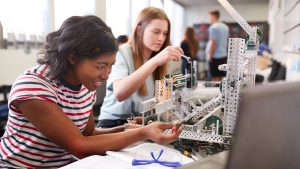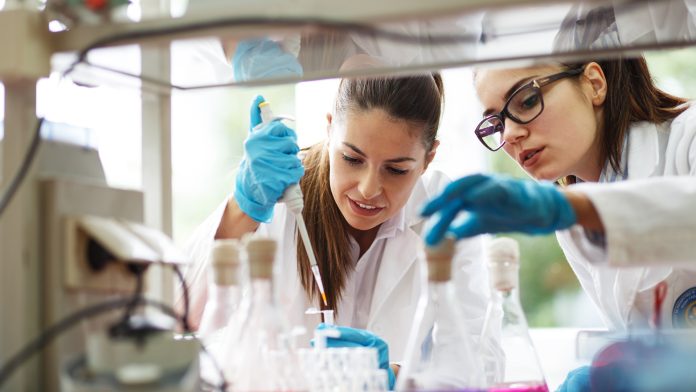Dr Victoria Garcia Sakai, Division Head for Neutron Spectroscopy at ISIS Neutron and Muon Source, discusses her personal journey through STEM education and research, and her commitment to empowering women in STEM fields.
Reflecting on my STEM journey so far, I realise it has been incredibly rewarding – I have had amazing opportunities, met fascinating people, and travelled the world.
However, it has not been without its challenges. It began when I was 17 and moving from Madrid to London to pursue a degree in Chemical Engineering at Imperial College, a decision inspired by my dad’s engineering job in the food industry, my love of maths, and the excitement of living in a different country.
My first challenge was coping with feeling like a failure when I struggled to secure a job in industry after graduation despite achieving a high final grade, and watching my peers move on to well-paid jobs in the oil and gas or pharmaceutical sectors. I had many doubts – was I too young? Was it the language barrier or cultural differences?
It was around this time that my personal supervisor offered me a PhD in Polymer Thermodynamics, sponsored by ICI Chemicals. It seemed like the best option, so I took it. This pivotal decision would take me across the globe and challenge me both academically and personally.
No matter what subject you choose, undertaking a PhD is a test of resilience, self-discipline, and character building. There were occasions where I was overwhelmed and came close to quitting.
However, I persevered and when I received a travel grant from the Royal Academy of Engineering, I was able to spend the last summer of the PhD at Penn State University in the United States.
A turning point came in 2002 when I moved to the US to undertake a postdoctoral position at Penn State University. I was hired to set up a polymer characterisation lab for a simulation group, to enable experimental studies of polymer blend physics with neutron scattering techniques. The experiments were performed at the NIST Center for Neutron Research in Maryland. That was the beginning of my career in neutron science, which has carried on for the past 22 years.
My parents were not happy about my choice to move away from home, and for a close-knit Spanish family, this was another tough battle to fight. In retrospect, mustering the confidence to follow through with my decision was an important moment in my personal and professional growth.
In a similar way, making my own decision about returning to the UK five years later, without any direct influence, felt powerful. I didn’t want my parents to know that I had applied to the UK’s neutron facility, as I knew that they would push me to return even if it wasn’t the right job. I only told them once I had accepted.

Work in cryopreservation
As a neutron scientist at the ISIS Neutron and Muon Source, my current areas of research include biological systems and trying to understand structure-function-property relationships, amongst other things.
One specific area of interest is the intricate world of cryopreservation – a field with applications ranging from regenerative medicine to biobanking and reproductive technologies. Different cooling protocols and cryoprotectants result in different outcomes, effectiveness, and efficiency.
To optimise the cryopreservation recipe, it is important to have a deep understanding of the underlying mechanisms – such as whether a crystalline or glassy matrix forms and how it affects the survival of cells within these systems.
Neutron science
The unique properties of neutrons as a probe of matter compared to other research techniques, offer important information which has made them an increasingly popular and important technique for experiments addressing fundamental and societal challenges.
Neutron science has experienced a shift over the years, from being a specialist area within condensed matter physics to nowadays being applied across a wide range of different disciplines. It is an exciting time to be a part of the neutron research community.
Education to encourage women into STEM roles
Based on my own personal journey, I would encourage girls and women to enter the world of STEM as it offers plenty of exciting opportunities for learning, career development, and building long-lasting personal relationships.
A lot comes down to educating.
We need children to be given more exposure to STEM, and we need STEM roles to be portrayed as they truly are: normal people doing a normal job.
There is a lot of work to do in terms of educating women on the breadth of roles that exist within the STEM workforce, encouraging more women to tell their stories and act as mentors, and promoting equal sharing of family life and responsibilities.
By fostering a culture of inclusivity, promoting mentorship, and challenging traditional gender norms, we can create a more diverse and equitable STEM landscape and redefine what it means to be a woman in science.
The importance of inclusion in science
Inclusion is also important for progress in science itself. Collaboration and co-operation, rather than competition, are the key to unlocking the full potential of scientific research.
Educators, mentors, and apprenticeship providers, such as my current employer UKRI’s Science and Technology Facilities Council, play a crucial role as ‘catalysts’, passing on fundamental skills and a passion for science to emerging researchers.
But there is a clear need for more thorough, efficient, and effective upskilling of scientists and engineers. Solid foundations in fundamental techniques like neutron scattering are necessary for breakthroughs – small steps contribute to advancing scientific knowledge, making impactful discoveries, and developing innovative solutions to global challenges.
An example is my dedication to educational activities in my field of expertise, with much time and effort devoted to the Oxford School on Neutron Scattering, an internationally recognised program that has been running since 1966 and that offers training to scientists who are new to the field of neutron scattering.
Advice to aspiring women in STEM
My advice to aspiring women in STEM is simple – go for it, and don’t let anything get in your way. Embrace the challenges, persevere through the inevitable tough times, and be unafraid to follow your personal passions.
Surround yourself with supporting and inspiring people, learn from them, and take opportunities when they come. In a sense, choosing STEM is no different from any other career choice you may make, as life will always have good and bad moments.
STEM is not just a career, it is a journey of discovery, constant learning, innovating, and making friends, whilst contributing to making the world a better place. It allows you to understand and be part of tackling a variety of global issues and academic fields. You cross paths with countless brilliant and motivated people, whose excitement is incredibly contagious. You do it because you love it.









